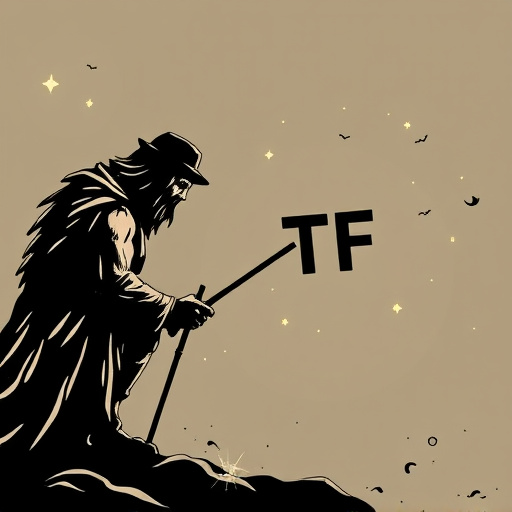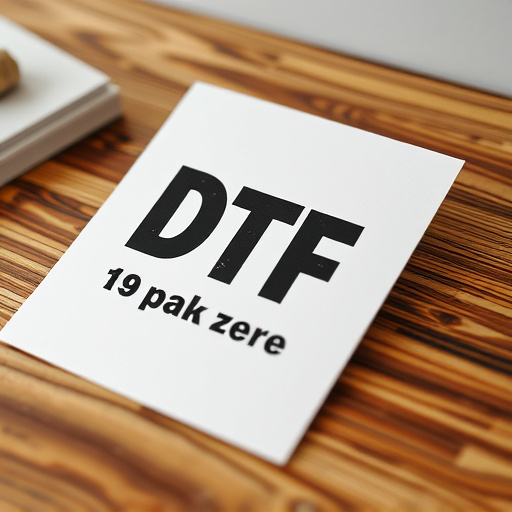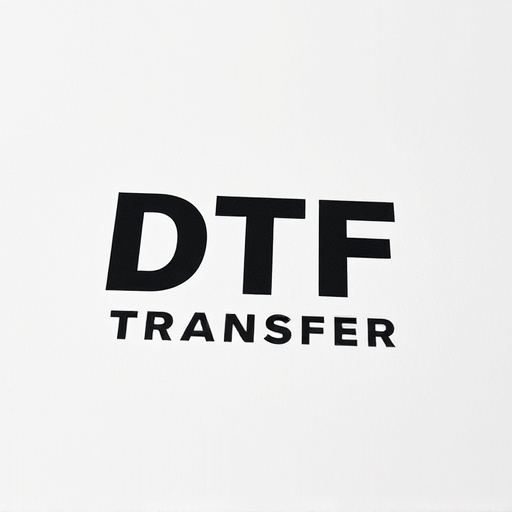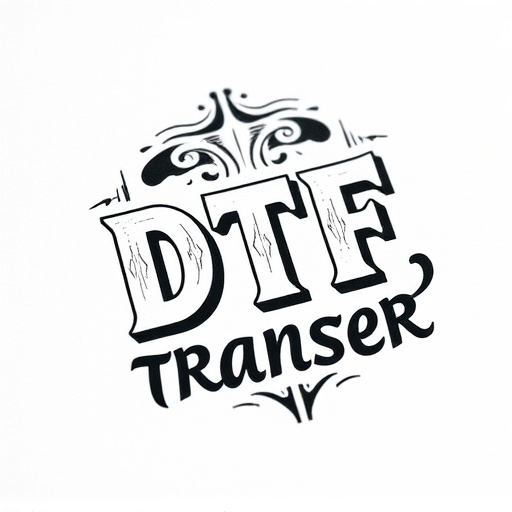Direct to Fabric (DTF) printing is a groundbreaking technology for light-colored garments, offering unparalleled color accuracy and speed. By eliminating intermediate steps, DTF reduces costs and produces intricate designs with crispness on delicate fabrics like cotton, linen, or silk. Optimizing transfers involves strategic choices: fast-drying, water-based inks for quick processing; synthetic materials like polyester for better compatibility and lasting color. Proper preparation includes selecting premium pre-washed fabric and using specialized DTF printing methods for precise control and long-lasting adhesion. DTF ensures vibrant colors remain intact through washes and wearings, revolutionizing garment customization with unique designs that captivate both creators and wearers.
“Discover the world of DTF (Direct-to-Fabric) transfers and their optimal application on light-colored garments. This technique offers a versatile and efficient way to add intricate designs to fabrics, making it popular among designers and enthusiasts. In this article, we explore the advantages of DTF for light-colored materials, from enhancing creativity to ensuring durability. Learn about ink and substrate selection, preparation tips, quality control measures, and the endless creative possibilities that await you in the realm of DTF transfers.”
- Understanding DTF Transfers: A Brief Overview
- Advantages of Using DTF for Light-Colored Garments
- Choosing the Right Ink and Substrate Combination
- Preparation and Application Techniques
- Ensuring Durability and Quality Control
- Creative Possibilities with DTF Transfers on Light Fabrics
Understanding DTF Transfers: A Brief Overview

Direct-to-fabric (DTF) transfers are a cutting-edge printing technology optimized for light-colored garment materials. This innovative process eliminates the need for traditional screen printing or heat transfer methods, offering a faster, more efficient, and cost-effective solution. DTF involves applying ink directly onto the fabric using a specialized machine, allowing for vibrant colors and intricate designs to be achieved in a single pass.
By bypassing intermediate steps like plate preparation or emulsion coating, DTF transfers ensure superior print quality and accuracy. This technology is particularly well-suited for small batch production runs, allowing designers and manufacturers to quickly adapt to changing trends and consumer demands. Moreover, DTF’s ability to produce high-resolution graphics with fine line details makes it ideal for intricate patterns and detailed artwork, enhancing the overall aesthetic appeal of light-colored garments.
Advantages of Using DTF for Light-Colored Garments

Using Direct to Fabric (DTF) printing for light-colored garment materials offers several significant advantages. Firstly, DTF technology enables precise and vibrant color reproduction, ensuring that designs maintain their impact and clarity even on pale fabrics. This is particularly beneficial for light-colored cotton, linen, or silk garments where traditional printing methods might struggle to achieve the desired visual effect.
Additionally, DTF provides a fast and efficient way to produce high-quality prints. The direct application of ink onto the fabric eliminates the need for intermediate steps, such as screen printing or heat transfer, which can save time and reduce production costs. This makes DTF an attractive option for businesses aiming to meet the growing demand for custom, on-demand clothing with intricate designs.
Choosing the Right Ink and Substrate Combination

When optimizing transfers for light-colored garment materials, selecting the appropriate ink and substrate combination is paramount. Digital Thermal Transfer (DTF) printing offers a versatile solution, allowing for precise color reproduction on lighter fabrics that traditional screen printing might struggle with. The key lies in choosing inks designed specifically for DTF, which are known for their vibrant colors and ability to adhere well to various materials.
Inks come in different types, each suited for specific substrate characteristics. For light-colored garments, fast-drying, water-based inks are often recommended. These inks not only ensure quick processing but also minimize the risk of smudging or fading, which is a common concern with lighter fabrics. Additionally, selecting substrates that complement the ink choice is crucial; synthetic materials like polyester tend to offer better compatibility and long-lasting color fastness compared to natural fibers.
Preparation and Application Techniques

Preparation is key when optimizing transfers for light-colored garments. The first step involves selecting high-quality, light-colored fabric as a base. It’s crucial to ensure this material is pre-washed and dried to prevent any shrinkage or color bleeding during the transfer process. A smooth surface is essential; minor imperfections can affect the final print quality.
Application techniques play a significant role in achieving crisp, vibrant designs. Direct to fabric (DTF) printing methods are ideal for light-colored garments as they offer precise control over colors and details. Using specialized inks designed for DTF ensures optimal adhesion and longevity of the transfer. Careful placement of the transfer film and even pressure application will result in a seamless finish, enhancing the overall aesthetic appeal of the garment.
Ensuring Durability and Quality Control

In the realm of transfers optimized for light-colored garment materials, ensuring durability and quality control is paramount. The direct-to-fabric (DTF) method, a cutting-edge approach, revolutionizes the way we apply designs to textiles. By eliminating the need for intermediate layers, DTF directly prints onto the fabric, enhancing both longevity and overall quality. This process ensures that vibrant colors remain rich and resilient to washings and wear, preserving the initial visual impact of the design.
Quality control measures in DTF production involve meticulous scrutiny at every stage, from ink selection to printing precision. Advanced printing technologies, coupled with rigorous testing protocols, guarantee that each transfer adheres strictly to quality standards. This dedication to control ensures that garments adorned with these transfers not only look exceptional but also maintain their aesthetic and structural integrity over time, making them a preferred choice for both fashion designers and consumers alike.
Creative Possibilities with DTF Transfers on Light Fabrics

DTF (Direct-to-Fabric) transfers have opened up a world of creative possibilities for decorating light-colored garment materials. The versatility of this printing method allows for intricate designs and vibrant colors to be seamlessly integrated onto fabrics, transforming them into eye-catching pieces. Artists and designers can experiment with various techniques, from simple monochrome patterns to complex multicolored illustrations, bringing their imaginative concepts to life.
The beauty of DTF transfers lies in its ability to preserve the fabric’s original texture while adding a layer of artistic expression. This technique is particularly appealing for light-colored fabrics as it ensures the design stands out without overwhelming the material’s inherent aesthetics. Whether adorning t-shirts, hoodies, or accessories, DTF transfers offer an innovative way to create unique and personalized garments, captivating the imagination of both creators and wearers alike.














